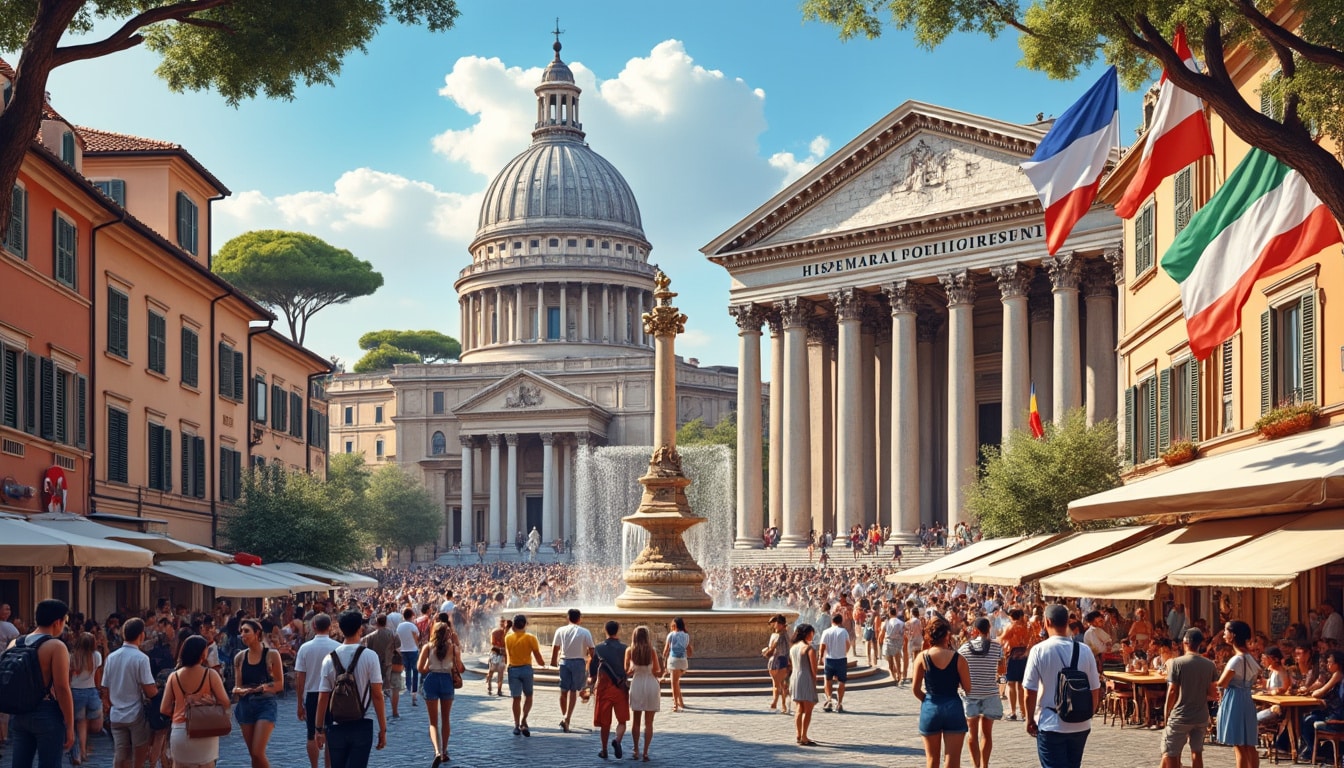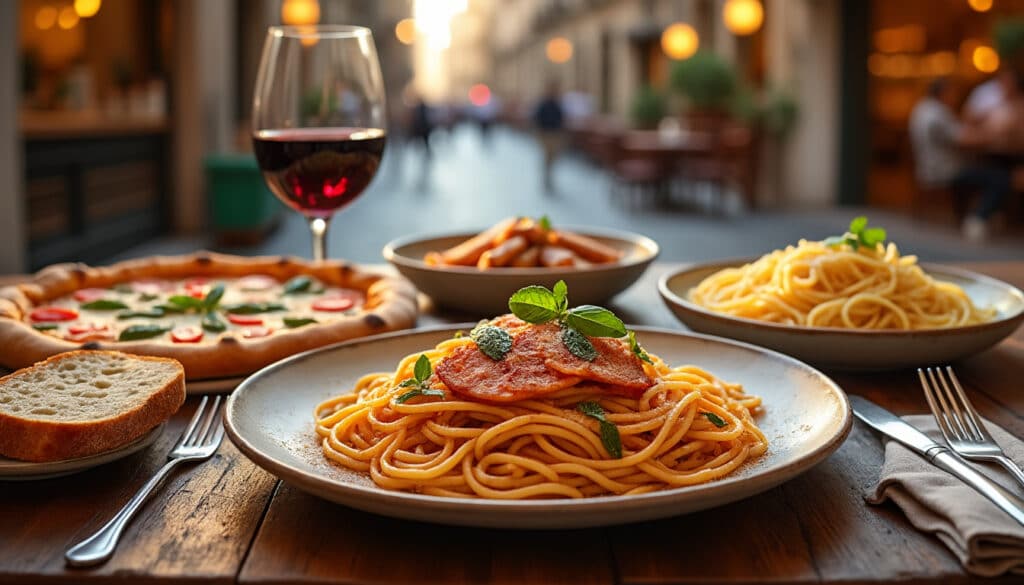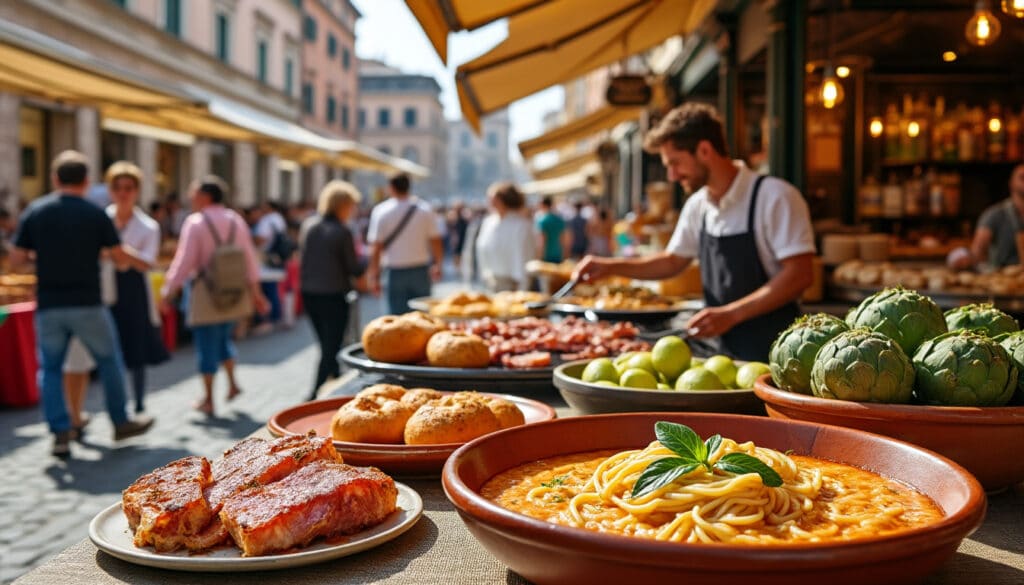Rome, the Eternal City, has not only been a powerhouse in history but also a vibrant hub of linguistic evolution. 🏛️ From Latin’s glorious past echoing in the corridors of ancient administration to the melodic cadence of modern Italian and the varied tones of immigrant languages, Rome’s linguistic landscape is as diverse as its cultural heritage. Each street corner whispers tales of its linguistic journey, providing both locals and visitors with an auditory treat that reflects centuries of history, migration, and cultural blending.
The Prevalence of Modern Italian: Rome’s Lingua Franca 🇮🇹
The bustling streets of Rome are alive with the sound of Italian, the modern lingua franca of not only Rome but all of Italy. Italian is the official language of the country, and in Rome, it permeates everyday life, from local markets brimming with fresh produce to the high-end restaurants where waiters describe the specials with an effortless flair. This melodic language, a direct descendant of Latin, is prominent in every aspect of Roman life, binding the city’s historical essence with contemporary culture.
But why is Italian so prevalent in Rome today? This can be partly attributed to its historical roots. Italian emerged from Latin, influenced by various dialects spoken throughout the Italian Peninsula, particularly Tuscan, which had a significant role in standardizing the language. During the Renaissance, prominent literary figures such as Dante Alighieri, Petrarch, and Boccaccio elevated Tuscan’s status, making it the foundation of modern Italian. This development, alongside Italy’s unification in the 19th century, cemented Italian as the dominant language.
A walk down the Via del Corso offers a prime example of Italian in action. Here, vendors will banter in Italian, adding phrases like “Che bellezza!” to entice tourists, while locals might greet each other with “Buongiorno” as they breeze past crowded cafes. The language is deeply interwoven with the vibrant Roman culture, from opera at Teatro dell’Opera to discussions over espressos in quaint piazzas.
Moreover, the Italian spoken in Rome includes a distinct regional flavor known as Romanesco. Romanesco adds color to the standard Italian and provides a proud sense of identity among native Romans. This dialect is a testament to the city’s unique socio-cultural evolution, providing insights into local humor, attitudes, and traditions.
This rich presence of Italian connects seamlessly with educational platforms such as Babbel, Pimsleur, or Duolingo, which offer courses tailored to learners eager to grasp the basics of this enchanting language before their Italian sojourn. For those living in Rome or visiting regularly, conversational classes available through Lingoda or face-to-face lessons at Berlitz can deepen their engagement with the language and culture.
In addition, Italian also acts as a bridge to understanding the broader Romance language family. Due to its similarities with languages like Spanish and Portuguese, non-native speakers often find it accessible, reinforcing its status in the global linguistic arena.
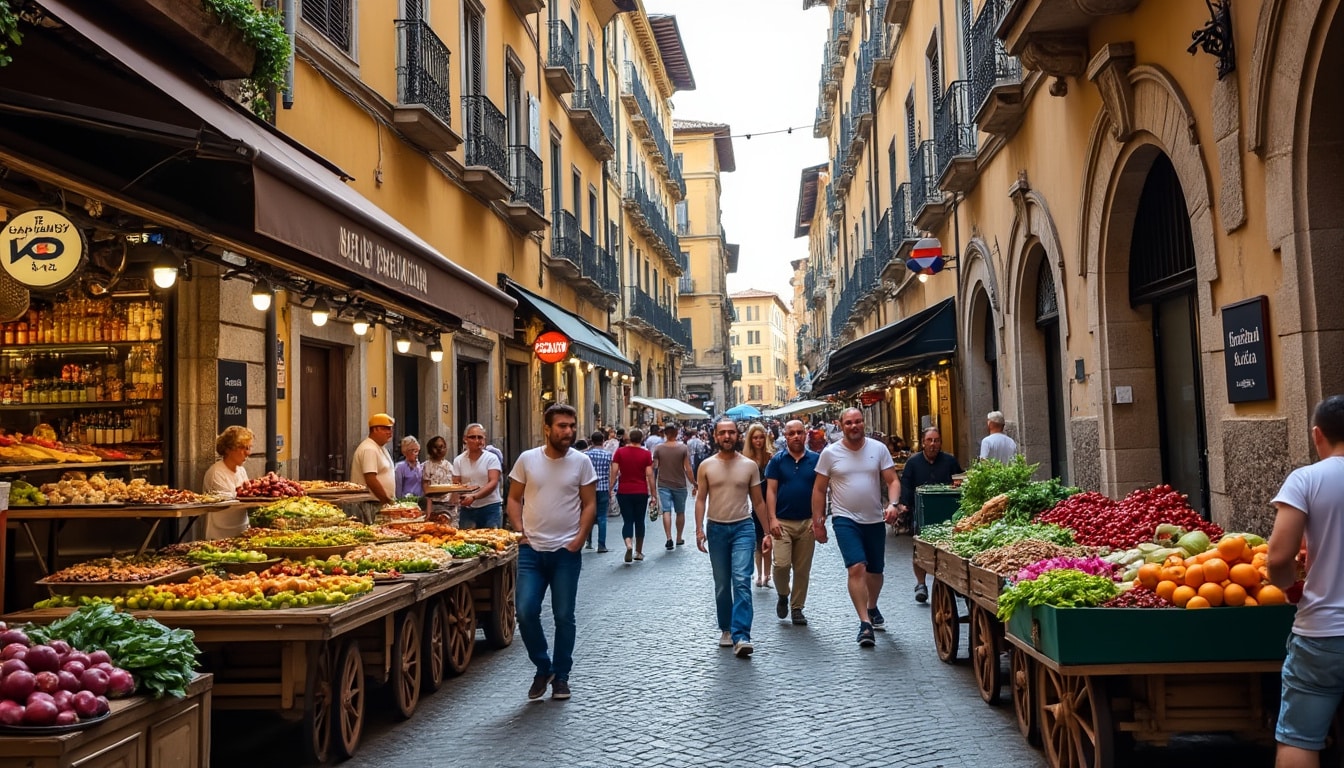
Latin: The Language of Ancient Rome 📜
Long before Italian, Latin was the language that echoed in the hallways of Roman forums and theaters. As the official language of Ancient Rome, it was integral in administering an empire and crafting laws that transcended continents. Despite being a “dead” language today, the legacy of Latin is omnipresent, from the legal terms etched into academic textbooks to the liturgy of the Catholic Church.
Latin’s prominence was not restricted to merely the elite or administrative circles. It was the lingua franca that united a sprawling empire, enabling clear communication across diverse provinces. This feature allowed traders, soldiers, and lawmakers to converse fluently, maintaining the empire’s coherence over time. The language served not just as a communication tool but also as a cultural weapon that facilitated the spread of Roman art, literature, and philosophy, seeding the intellectual groundwork for Western civilization.
Rome’s ancient ruins provide a silent reminder of Latin’s extensive reach. From the mighty Colosseum to the detailed stonework of the Pantheon, the inscriptions in Latin showcase the empire’s blend of power and eloquence. Even today, linguistic enthusiasts find Latin phrases embedded in modern Roman designs and architecture, subtly linking past glory to current elegance.
Intriguingly, Latin did not exist in a vacuum. Its natural evolution involved a dynamic interaction with native languages of the time. Languages like Faliscan and Oscan, spoken in areas surrounding Rome, gave birth to its colloquial variant, known as Vulgar Latin. Over centuries, Vulgar Latin morphed into the Romance languages — French, Spanish, Catalan, and of course, Italian — thus ensuring Latin’s immortal influence.
Although Latin is no longer spoken conversationally today, it remains a critical educational discipline. Many institutions worldwide, including technologically advanced solutions like Rosetta Stone and Memrise, offer Latin courses to help students unravel ancient texts, enhancing their comprehension of Roman history. For those captivated by languages, resources like Tandem provide an opportunity to connect with fellow Latin enthusiasts, ensuring that this illustrious language continues to enchant learners across the globe.
Latin in Modern Contexts
In religious contexts, Latin maintains a revered status. The Catholic Church still uses Latin in its official liturgy, signifying the language’s sacred and historical significance. Moreover, in the academic realm, Latin terminology is indispensable, especially in fields like law, medicine, and science, where it aids in maintaining consistency across different languages.
As a cultural keystone, Latin influenced various modern media. Movies, novels, and television series that depict ancient Rome often sprinkle Latin into dialogues, providing authentic historical experiences. Shows like “Barbarians” creatively showcase Latin interactions, captivating audiences while offering a glimpse into the language’s former vibrancy.
Immigrant Languages: Rome’s Melting Pot 🌍
In the modern age, Rome has transformed into a vibrant cosmopolitan center where the air is punctuated with an array of immigrant languages, enhancing its cultural and linguistic tapestry. The influx of immigrants, primarily from Eastern Europe, Asia, and North Africa, has turned the city into a true linguistic mosaic, echoing the bustling multi-language environment of ancient times.
A walk through the multicultural neighborhoods such as Esquilino or Piazza Vittorio reveals a symphony of languages like Arabic, Chinese, Romanian, and Bengali blending with the Italian backdrop. This multicultural integration offers a rich tapestry of linguistic interactions, resembling a live exhibition of Rome’s evolving linguistic identity.
Rome’s multicultural dynamism is not accidental but a result of the city’s role as a major European metropolis with a welcoming ethos. This diversity offers a gift to language learners and fosters opportunities to experience these rich linguistic heritages firsthand. Meeting people from diverse backgrounds provides a chance to discover and learn new languages, whether through informal interactions or structured learning experiences.
Various language schools and online platforms capitalize on this diversity. For instance, language exchange initiatives foster connections among speakers of different tongues, while tools like Busuu and learning centers within Rome offer courses in multiple languages. They cater to both expatriates eager to learn Italian and Italians wishing to pick up new foreign languages.
The presence of immigrant languages enriches Rome’s business environment and cultural life. Restaurants and shops display multilingual signage, reflecting the diversity of Rome’s patrons. This fusion is also evident in local festivals and cultural events where music, film, and art from different heritage groups are celebrated with fervor.
Impacts on Education and Employment
In education, the recognition of immigrant languages has led schools to introduce multilingual programs, promoting inclusivity and cross-cultural understanding. This approach ensures that new generations grow up uniting Rome’s traditional heritage with a modern global perspective.
Workplaces in Rome, especially in international corporations, have embraced this diversity, often requiring multilingual capabilities among employees. This demand creates a vibrant job market for translators, language tutors, and interpreters, ensuring businesses can operate effectively in a globalized economy.
Learning Resources for Languages Spoken in Rome 📖
In a city where multilingualism is prevalent, learning resources are plentiful and varied, catering to both enthusiastic learners and necessity-driven individuals. Languages spoken in Rome can be explored through numerous online platforms and physical institutions, with something for everyone from beginner to advanced levels.
For an interactive language experience, platforms like Language Line Solutions offer practical language tools, assisting learners to practice real-life conversations with native speakers. Such platforms support numerous languages, including Italian, Arabic, and Romanian, aligning with the diverse linguistic needs in Rome.
Moreover, traditional classroom settings like the British Council in Rome provide structured language courses, enhancing proficiency through personal interaction with qualified instructors. On the other hand, digital resources like Babbel, Busuu, and Duolingo offer flexible learning schedules, perfect for those with busy lifestyles or for travelers wishing to pick up conversational skills before a trip to Rome.
Immersive learning is another popular approach, supported by city tours that integrate language lessons with cultural exploration. These educational tours cover iconic sites like the Colosseum and the Vatican while offering language practice, making them highly engaging and effective for language acquisition.
For those interested in specialized vocabulary, sector-specific courses are available. For example, medical and legal language courses equip professionals with the terminology required for effective communication within their fields. Berlitz specializes in such tailored programs, ensuring competence in professional settings.
Language Exchange Opportunities
Language exchange clubs provide a less conventional yet incredibly effective way to learn and practice languages. Events held in local cafes and cultural centers allow learners to engage in friendly exchanges, trading language skills while forming international friendships.
These exchanges are facilitated by networks like Lingoda, which offer virtual meetups for participants unable to join in-person sessions. Such communities promote linguistic diversity, cultural appreciation, and enhanced cognitive skills for all involved.
Unique Dialects and Historical Languages 🌐
Beyond the mainstream languages, Rome celebrates a plethora of unique dialects and historical languages, each adding depth to its rich tapestry. Romanesco, as previously mentioned, is perhaps the most famous among these, encapsulating a sense of local pride. Yet, alongside Romanesco, other dialects thrive and reflect the historical settlement patterns and cultural intersections throughout Rome’s history.
The Lazio region surrounding Rome has its own variations of Italian, influenced by geographic and historical factors. Throughout history, areas around Rome experienced different degrees of linguistic autonomy, contributing to distinct linguistic profiles.
On the historical front, languages from Navarrese to Corse have found space within Rome’s vibrant past. Although not spoken widely today, their impact lingers through ancient texts, oral traditions, and names of places or families within the city.
Rome also serves as a guardian of antiquity by sustaining the legacy of Latin beyond traditional realms. With institutions that preserve Latin manuscripts and foster research into ancient languages, the city continually enriches our understanding of linguistic evolution.
A curious visitor can explore these linguistic mysteries at the Biblioteca Nazionale Centrale di Roma, which provides access to original manuscripts and texts. These venues encourage exploration, fostering a deeper appreciation for Rome’s linguistic layers.
The Role of Linguistic Diversity in Modern Rome
The current linguistic landscape of Rome strengthens its cultural resilience, contributing significantly to its vibrant identity. It allows citizens to express themselves across different cultural flavours, highlighting the city’s inclusivity.
This diversity stimulates creativity within the arts, from cinema that embraces multi-lingual storytelling to musical compositions that draw on eclectic linguistic traditions. The city’s multi-linguistic nature breeds innovation, positioning Rome as a forward-thinking metropolis.
| Language/Dialect | Region/Use | Notable Characteristics |
|---|---|---|
| Italian | National, everyday use | Official language of Italy, evolved from Latin |
| Romanesco | Rome | Regional dialect with local slang |
| Latin | Historic, liturgical | Ancient Rome’s lingua franca, used in academia |
| Arabic | Immigrant communities | Influence in multicultural neighborhoods |
| Chinese | Immigrant communities | Strong presence in market districts |
The array of languages and dialects spoken in Rome attests to the city’s dynamic cultural milieu. As visitors wander the historic streets, they’re greeted not only by ancient landmarks but also by a symphony of languages that narrate Rome’s evolving narrative. The result is a city that celebrates diversity and promises endless exploration for linguists and tourists alike.
FAQ about Languages in Rome
- 🌍 Q: What is the main language spoken in Rome?
A: Italian is the main language spoken in Rome, serving as the official language of Italy. - 🔍 Q: Are there immigrant languages commonly spoken in Rome?
A: Yes, languages like Arabic, Chinese, Romanian, and Bengali are commonly spoken in immigrant communities. - 📚 Q: Is Latin still used in Rome today?
A: While not used conversationally, Latin is still taught academically and used by institutions like the Catholic Church. - 🎓 Q: Can I learn Italian while visiting Rome?
A: Absolutely! Rome has a variety of language schools and resources for learning Italian, including online platforms like Babbel and Duolingo. - 🗣️ Q: How can visitors engage with Rome’s linguistic diversity?
A: By attending language exchange events, tours, and festivals, visitors can immerse themselves in Rome’s multicultural communities.
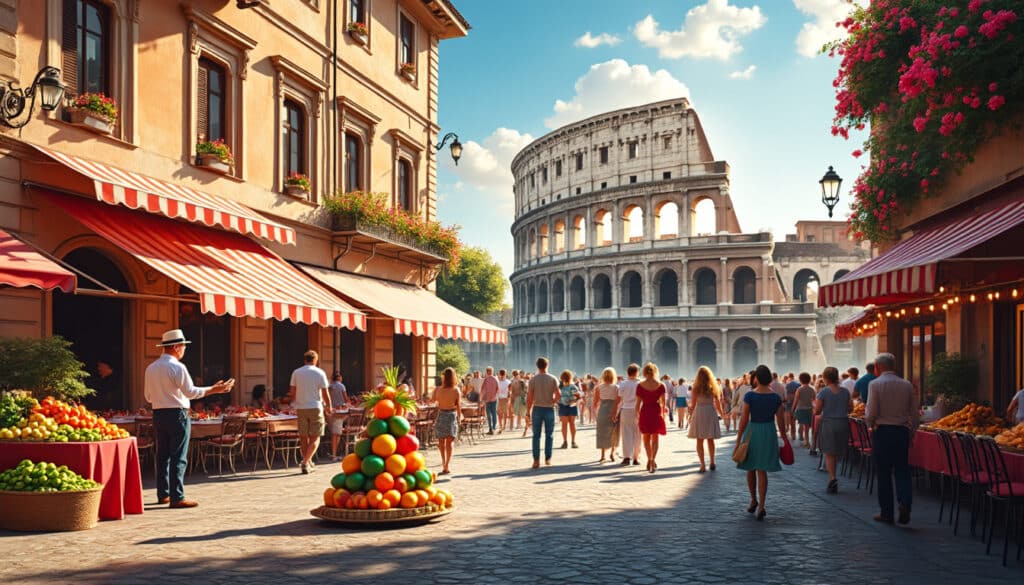
Rome, the heart of Italy, is often celebrated for its seamless blend of ancient history and modern allure. As we explore the vibrant culture and local life in this timeless city, we’ll uncover how its cobblestone streets and vibrant piazzas…
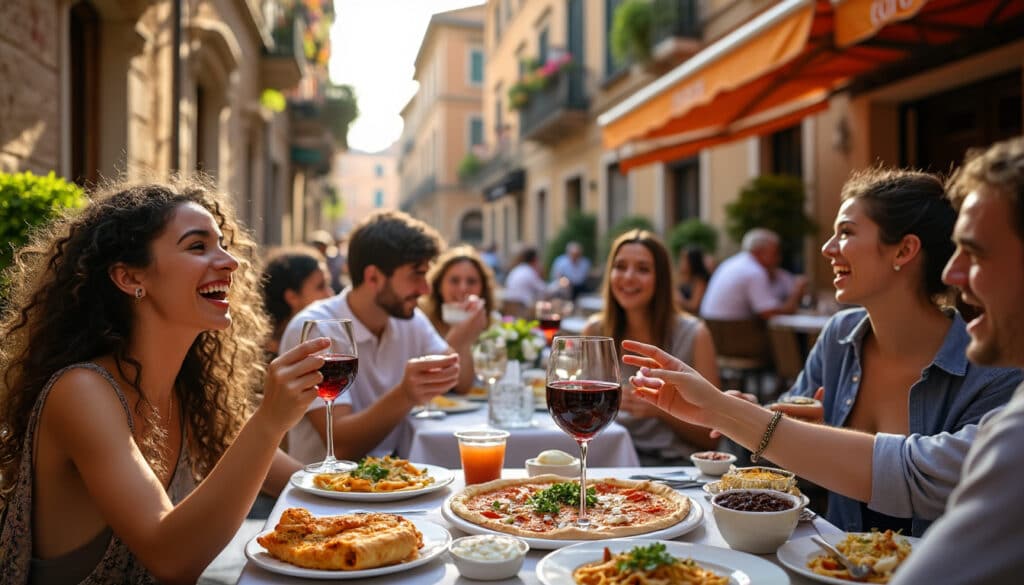
When it comes to savoring the delights of Roman cuisine, knowing where to eat can transform your trip into an unforgettable experience. Rome, with its charming cobblestone streets and picturesque piazzas, boasts an array of eateries, from cozy trattorias to…
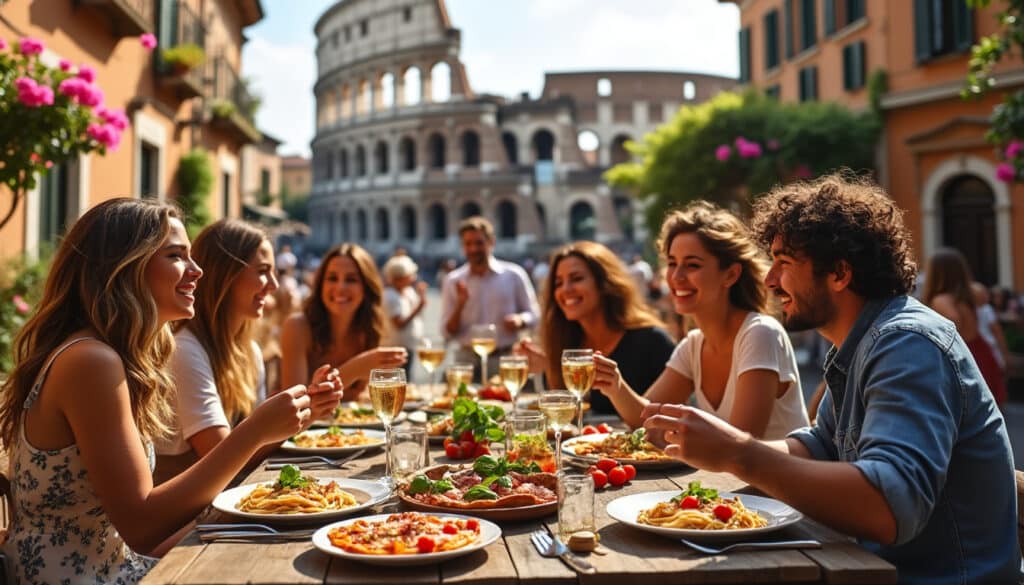
The culinary rhythms of Rome are as historic and captivating as the city itself. From the early morning aroma of freshly brewed “Caffe Roma” wafting through cobblestone streets to the late-night buzz in trattorias and osterias, meal times in Rome…
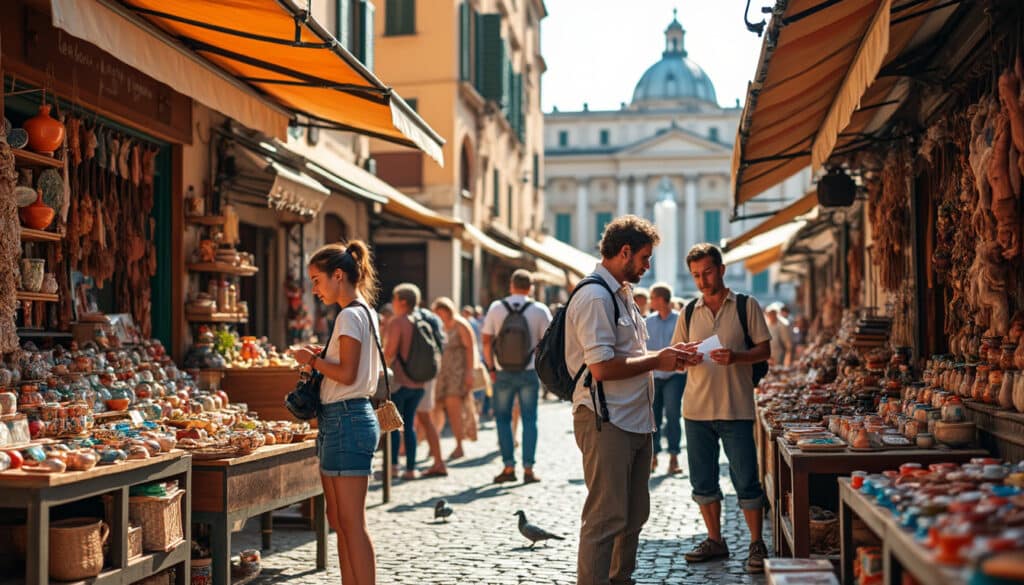
Souvenirs and shopping in Rome
Rome, the Eternal City, is a treasure trove of history, art, and culture, making it a paradise for souvenir seekers. Whether you’re wandering through its bustling streets or exploring secluded artisan workshops, the city offers an abundance of unique gifts…

